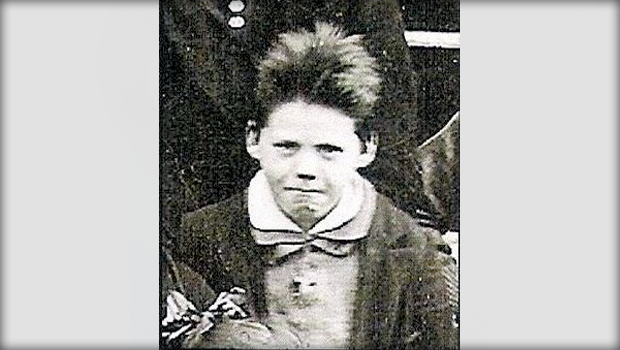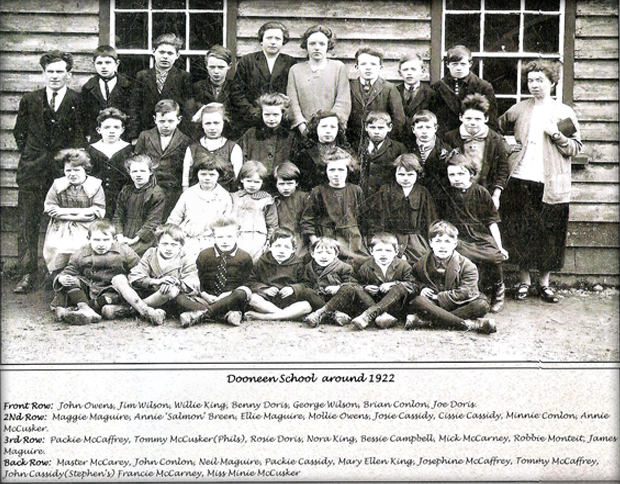By Msgr. Francis A. Carbine
 During the summer, 2014, John McDevitt of Ardmore, Pa., visited the National Library of Ireland, Dublin, to research Catholic Sacramental Registers available on microfilm. His particular interest was the parish of Donaghpatrick, Diocese of Tuam, County Mayo.
During the summer, 2014, John McDevitt of Ardmore, Pa., visited the National Library of Ireland, Dublin, to research Catholic Sacramental Registers available on microfilm. His particular interest was the parish of Donaghpatrick, Diocese of Tuam, County Mayo.
He discovered that resources for viewing were excellent; however, the microfilmed records presented problems. For example, entries made with quill pens were often illegible. Latin was used for first names. There were gaps in the sequence of years. The quality of the film was often poor.
 “However, I learned that ‘Donaghpatrick’ means ‘Stone of Patrick,’ and a large stone in the graveyard is described as the stone on which St. Patrick knelt!” A subsequent trip to the Probate Office in Galway yielded little material.
“However, I learned that ‘Donaghpatrick’ means ‘Stone of Patrick,’ and a large stone in the graveyard is described as the stone on which St. Patrick knelt!” A subsequent trip to the Probate Office in Galway yielded little material.
Another researcher, James McCaffrey – a nine-times visitor to Ireland – had better luck. In 2013, he went to Tempo, County Fermanagh, home of his grandfather. Here he learned about a cousin, James B. Maguire, and saw his photograph in a reunion book for the local school at Dooneen. This book documented McCaffrey names in school registers.
“I learned that James Maguire left Ireland in 1930, emigrated to the United States where he served in the U.S. Army. Wounded at Omaha Beach in the D-Day invasion, he died on July 19, 1944, and was buried in the American Cemetery in Normandy, France.
“Eventually, my wife and I traveled to his grave, said a prayer, and left an Irish-American pin at the base of his cross. He is an example of the many Irish who fought and died for freedom.”
In the townland of Letterbaily, Tempo, this researcher – also a member of the Irish Genealogical Society of Delaware County – located the ancestral McCaffrey homestead. “Today the house is a typical whitewashed cottage that formerly had a thatched roof. I also found two horse shoes buried in the barn –my prize mementoes. A very significant find was the Sacramental Ledger from 1830 that listed the names and dates of my great-great -grand parents.”
An important fact for researchers is that prior to 1850, baptisms and marriage took place in family cottages. Anti-Catholic laws forbade the construction of churches. Often, a thatched lean-to over the altar was the best that could be provided.
In those times, the need for records was minimal. The local community knew the facts of births, marriages and death. Persons who emigrated rarely returned. During the penal centuries, records could be dangerous!
In 1850, Archbishop Cullen of Armagh convened the Synod of Thurles, Tipperary. He mandated that baptisms and marriages be celebrated in churches that had recently become legal. He also ordered that sacramental records be maintained.
However, in 1890, British authorities impounded many Catholic books and deposited them in Dublin. Many records were destroyed in the Troubles of the 1920’s: Custom House fire, 1921; and fire in the Public Records Office, 1922.
[I have located my family sacramental records at Donaghmore, County Donegal, dating from 1840.] James McCaffrey’s 1830 Sacramental Ledger was a find indeed!
Also in 2013, Peter McEneaney of West Chester, Pa., spent a week at a Genealogical Conference in Castleblaney, County Monaghan. “There were 85 persons in our class. Although I have been doing research for 60 years, I learned more about the when, where and how of genealogy.
“Years back, I went to St. Mary Cemetery, Castleblaney, where I visited the grave of my great uncle Nicholas who had been buried beneath a Celtic cross in 1947. On a return visit in 1998, I was startled to see that our McEneaney stone had been replaced with a new, marble-like black stone inscribed with the name ‘Daly.’
“My great-uncle Nicholas left no children. I know that there are McEneaney-Daly connections; however, the mystery of our missing tombstone goes unsolved!”
The modern researcher can benefit from websites. There is no substitute, however, for “hands on” research in the parishes, courthouses, townlands and counties of Ireland.
John McDevitt, founder of the Irish Genealogical Society in Delaware County has advice for beginners. “First, research American sources such as immigration and census records. Then, try to locate death notices in newspapers and remembrance cards distributed at wakes. Finally, don’t forget Aunt Nellie – because Aunt Nellie knows all!”


